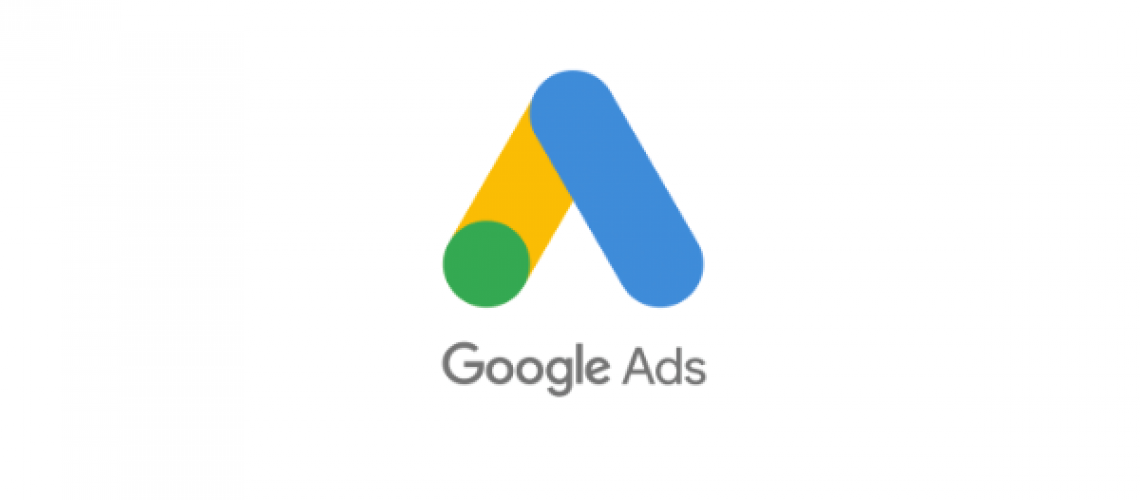Most of all the Google Ads campaigns, both search (for leads) and display (for brand marketing), get an average CTR (click through rate) below 2 %. We will try to explain in this text how to get a CTR between 10% and 20% in Google Ads campaigns, using a hand crafted big database data mining audience experiment approach, mixed with Google automation recommendations, from Google Recommendations and Google Insights, applied case by case; and we also use Performance Max campaigns as part of the experiment; finally we may use other type og Google campaigns, like Video campaigns and Smart Shopping to test those Google automation campaigns with the hand crafted experiment campaigns.
Some of the Google Ads databases data are neither accurate nor precise because they are still young databases and also because the technical means that Google use to get the data is still at an early development stage. This is one of the main reasons most of the campaigns get CTR lower than 2%.
Google Ads has three main databases: search database; people database and content-placements database.
Search database data have high accuracy. Content-placement database data have medium accuracy. People database data have low accuracy.
The idea behind the data mining audience experiment is to design, setup and launch as many campaigns as single audiences can be found in the databases, one campaign for each single audience. After few weeks running the experiments, you can get a pattern data among all the campaigns, and hopefully you will get few campaigns with CTR between 10 and 20%. Then, you will pause those campaigns with low CTR and you will invest the money in those few campaigns with high CTR between 10 and 20%. The investment in each campaign during the experiment phase is very low because all you want to get is the data pattern to look for the campaigns with high CTR. The experiment investment risk is very low. Once you have the campaigns with high CTR running for few weeks, then you will look for those campaigns with high CVR (conversion rate) and low CPA (cost per adquisition or cost per lead), and you will invest the budget is these campaigns. It is important to have high ads with high QS (quality score) for those keywords with high CTR. If you get high CTR with low QS, then you will adjust ads relevance and landing page performance in order to increase QS for those keywords. This adjustment will reduce CPC and CPA.
The advertising business and the new players
Advertising is a $ 700 billion per year business worldwide.
The advertising business used to be shared by many TV stations, radio stations, printed newspapers and other printed media worldwide in every country. There was no monopoly in the business. This was the advertising business landscape at the end of the 20th century. It was a business that belonged to the industrial revolution media, before the beginning of the information and technology revolution, and before the Internet.
Today in 2022, advertising business belongs to 2 companies, Alphabet (Google) and Meta (Facebook). Alphabet revenues comes all from advertising and it is a $ 300 billion a year business. Meta revenues comes all from advertising and it is a $ 100 billion a year business. Both, Alphabet and Meta have near 60% global market share of a $ 700 billion a year worldwide advertising business. During the last 30 years, the advertising business has been duopolized by Alphabet and Meta, two companies that did not exist 30 years ago.
There is still a $ 300 billion a year advertising business invested in the traditional media, mainly traditional TV in USA, Europe and Japan. When all of this business move to the digital media, during the next few years, the world will have two companies that will own a $ 700 billion a year digital advertising growing business. It will not be any business but the new advertising business, with the capabilities of using big databases and artificial intelligence technologies to deliver the right message, to the right person, at the right time, at the right place. This capability has made Alphabet and Meta two of the most powerful companies in the world today, not only because of the business size and duopoly characteristics, but because of all the communication power that both companies have, due to the big databases and other new technologies that both companies are developing using their big research and development budgets. These are new technologies that these two corporations are developing such as big databases, artificial intelligence, machine learning, natural language processing, metaverse and many other new technologies that are just at their very early development stage. As the Rockefeller-Standard Oil used to be the most powerful family and company in the world during the industrial revolution era, nowadays Alphabet and Meta are two of the most powerful companies in the world. You can read The Power of Google to have an idea of how powerful Google is, not only economic, technological and information power, but also political power because of the big databases and the advertising technology that could be used to influence in the democratic country elections, as it happened in the recent years with Facebook and Cambridge Analytica scandal.
Digital Advertising features
Digital advertising has many features that classic advertising does not have. Here we mention few of them:
Impressions are free of charge in digital advertising. Impressions are charged in classic advertising. This means that top of mind awareness is free of charge in digital advertising and it is charged in classic advertising.
Pricing is set by advertisers through an algorithm bidding system in digital advertising. Pricing is set by the media owner in classic advertising.
Advertisers only pay if users click in the ad in digital advertising and this is the reason for the name Pay Per Click (PPC) that the industry gives to digital advertising. Advertisers pay all classic advertising, whether or not users see or engage with the ad. Classic advertisers pay for the impressions, regardless there is user view and engagement or not with the ad.
About Ad Quality Score (QS)
“Quality Score is a diagnostic tool meant to give you a sense of how well your ad quality compares to other advertisers.
This score is measured on a scale from 1-10 and available at the keyword level. A higher Quality Score means that your ad and landing page are more relevant and useful to someone searching for your keyword, compared to other advertisers.
You can use the Quality Score diagnostic tool to identify where it might be beneficial to improve your ads, landing pages, or keyword selection.”
The best spot, which paradoxically pays the lowest price in digital advertising, is set by a Quality Score diagnostic tool. This Quality Score tool has three main variables just like the organic search engine algorithm, and CTR is one of the most important variables. The highest the CTR the highest the Quality Score for the Ad, therefore the lowest the CPC. The best spot is assigned by the quality score algorithm to the ad that has the highest quality score in digital advertising. The best spot is assigned to the highest price in classic advertising. Paradoxically, the best spot pays the lowest pay per click in digital advertising.
Landing page performance also have a possitive impact in the Quality Score algorithm.
Quality Score is calculated based on the combined performance of 3 components:
- Expected clickthrough rate (CTR): The likelihood that your ad will be clicked when shown.
- Ad relevance: How closely your ad matches the intent behind a user’s search.
- Landing page experience: How relevant and useful your landing page is to people who click your ad.
About Audiences
Digital advertising audiences can be targeted by many variables that come from Google three big databases: people, content-placements and searches databases. These databases variables include geographic locations variables: country, state, county, city, neighborhood, address; demographic variables: age, gender, parental status, household income; interests: topics, content, products, services; purchase: purchase made, purchase intention, purchase behavior; websites visited; App used; searches made; physical places visited; content targeting: words, phrases, topics; digital places targeting or placement: websites, blogs, Apps, any URL. Classic advertising audiences can be targeted only by few variables: geographic locations and some demographics variables.
Google Ads versus Meta Ads
We will write in this text only about Google Ads and not about Meta Ads (Facebook and Instagram). Not only because Google is the advertising business number one world leader, but also because Google big databases are larger than Meta big databases and they have larger number of variables, which makes Google the advertising leader and the advertising supplier that can allow advertisers to get CTR and conversion rates much higher than Meta Ads, and also Google allows advertisers to get CPC lower than Meta Ads.
Google has three big databases: people database, searches database and content-placements database. Meta (Facebook and Instagram) only has one big database, people database.
Our own research and case studies have shown that Google Ads beats Meta Ads in all metrics, CTR, CVR and CPC among others.
LinkedIn professionals and industries database can be very useful for B2B campaigns
The big database data mining audience experiment approach plus automation
Google Ads big database data mining audience experiments using Google three big databases, handcrafted to match audiences, plus automation recommendations and extensions included in the audience experiment.
Google organic search and Google Ads are still both at steam engine stage, still too early to be effective and efficient, and this is the reason behind the very low SEO and Ads campaign metrics, regardless it is CTR, conversion rate, or any other reach, engagement and conversion metrics that you choose. Google databases are still too young, smart mobiles are still too young, and the way Google collects data is still with very low precision because technology is still at a very early stage, it is still at steam engine stage, making the analogy with the industrial revolution. However, Google and its technologies is the future of advertising, and sooner or later the Google technology will not be steam engine anymore but it will be a rocket to the moon. Therefore, businesses of all sizes should go through the learning curve of using Google SEO and Google Ads, so when times comes they will be ready to take advantage of the rocket to the moon Google technology. In the meantime, businesses of all sizes should approach Google SEO with a long time topic and subject matter expert approach and Google Ads with a handcrafted data mining audience experiment approach plus automation.
Through the data mining audience experiments we are looking for those audience campaigns with the highest CTR, the highest conversion rate and the lowest CPC.
Every brand and every business can target the following audiences using Google three big databases: search, people and content-placements
Geographic audiences: country, state, city, county, neighborhood, address.
Demographic audiences: age, gender, parental status and household income.
Search audiences: key-words, key-phrases, topics, exact match, phrase match and broad match.
Affinity audiences: Topics of interest
In market audiences: Products and services of interest, purchase intention.
Custom audiences: website visited
Custom audiences: apps used
Custom audiences: online purchase made
Custom audiences: searches made
Custom audiences: physical places visited
Placement audiences: words in the content
Placement audiences: phrases or terms in the content
Placement audiences: topics in the content
Placement audiences: websites URL addresses
Placement audiences: Blogs URL addresses
Placements audiences: Apps
Google Ads Portfolio Case Studies from Julio R. Sanoja
You can see few case studies in the following link:
https://www.msalesleads.com/google-ads-case-studies-with-higher-than-average-ctr/


